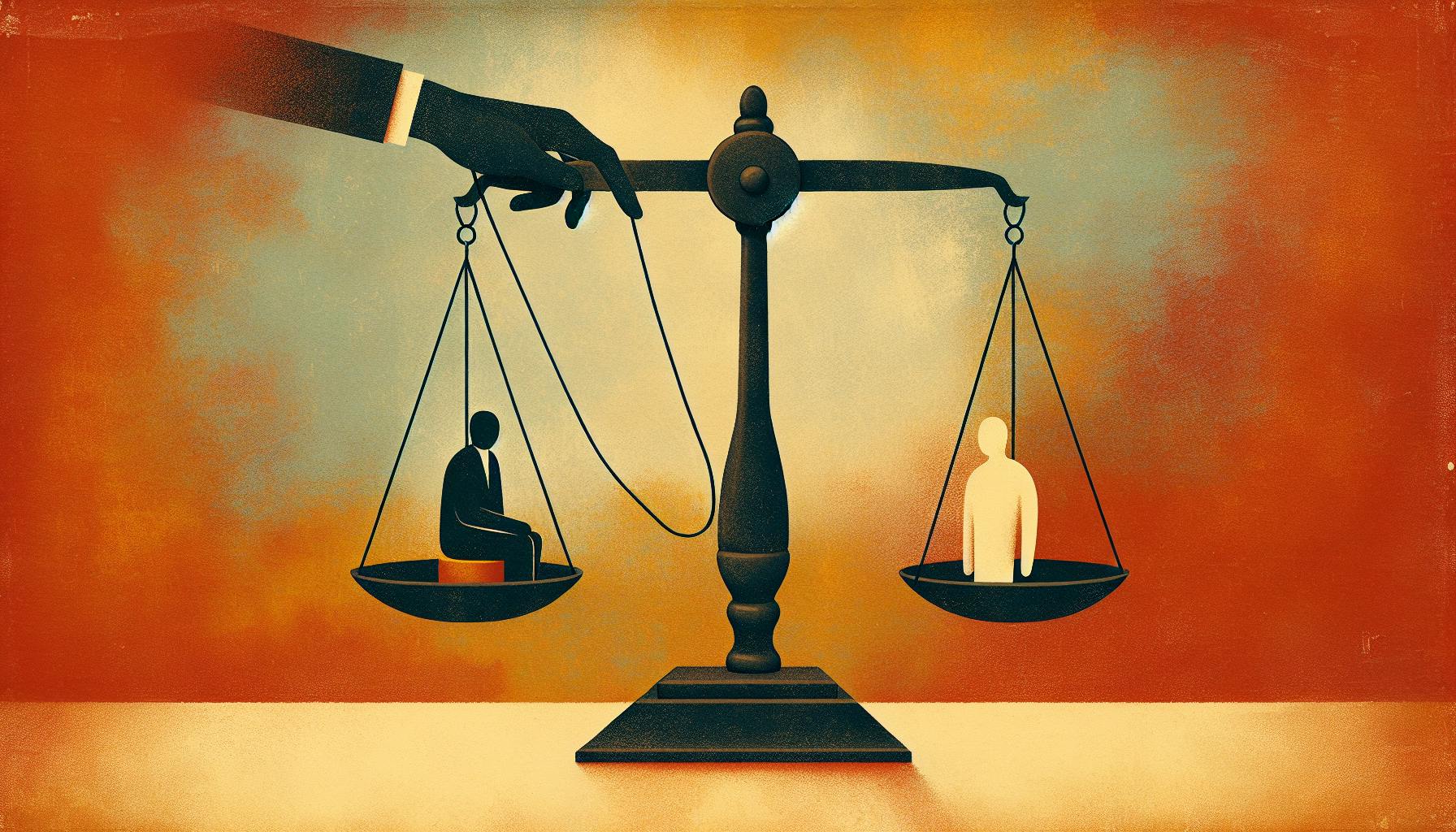Property owners would likely agree that nuisance and trespass can negatively impact one's rights and enjoyment of their property.
By understanding key differences between nuisance and trespass, you can better safeguard your property rights and seek appropriate legal remedies when interference occurs.
In this article, we will compare nuisance and trespass, examine types and examples of each, and explore legal implications and preventative strategies to limit unlawful interference with property rights.
Introduction to Nuisance vs Trespass: Interference with Property Rights
Nuisance and trespass are two legal concepts that relate to interference with private property rights.
A private nuisance refers to substantial and unreasonable interference with the use or enjoyment of private property. This could include things like noise, odor, smoke, flooding, or other disturbances originating from a neighbor's land that crosses property lines. Property owners can sue for damages or injunctive relief in nuisance cases.
Trespass refers to the unlawful physical invasion or entry onto private property without the owner's permission. Trespass laws aim to protect exclusive possession of property. Even a minor physical intrusion like walking across someone's private lawn can constitute trespass. Property owners can sue trespassers for damages.
While nuisance relates to use of property, trespass relates to physical invasion of property. Both legal concepts provide protections and remedies when interference with property rights occurs.
Understanding Private Nuisance and Its Impact on Property Rights
A private nuisance arises when there is substantial and unreasonable interference with the use or enjoyment of private property. For example, a neighbor operating loud machinery at night could constitute a nuisance through noise and disruption.
Other common nuisance examples include:
- Foul odors from a nearby factory wafting onto private land
- Smoke or soot deposits from an industrial operation
- Tree branches or roots extending from a neighbor's yard causing damage
- Water or flooding due to changes in drainage from an adjoining property
Nuisance can impact property rights by limiting the owner's ability to comfortably inhabit, access, or conduct business on their land. It can also reduce property values.
Those impacted by a nuisance can sue for direct damages to cover losses incurred as well as injunctive relief ordering the nuisance activities to stop. For instance, a homeowner impacted by foul odors could seek medical expenses, reduced rental income, and an injunction limiting the odor cause.
Exploring Trespass to Land and Unlawful Entry
Trespass to land refers to any unauthorized, physical intrusion onto private property. The trespass itself creates grounds for legal action, even if no damage occurred.
Examples of trespass include:
- Walking across someone's private lawn without permission
- Allowing livestock to graze on another's land
- Felling trees or removing minerals from someone else's property
- Parking a vehicle on private land not open to the public
Trespass becomes a misdemeanor offense in some states if the trespasser refuses to leave when asked or has also committed theft, damage, or injury.
Property owners impacted by trespass can sue for damages to cover losses tied to the intrusion, such as harm to landscaping. They may also seek injunctive relief or nominal damages.
Comparing Key Differences Between Nuisance and Trespass
While nuisance relates to substantial interference with the use or enjoyment of land, trespass deals with the unlawful physical invasion or entry onto private property.
A few key differences include:
- Nuisance relates to disturbances originating from beyond the property line, while trespass requires physical intrusion across the boundary.
- Nuisance impacts use of property, but trespass impacts possession and exclusive control.
- Nuisance suits can lead to damages or injunctions limiting the nuisance cause, while trespass suits provide damages for losses and aim to deter future intrusion.
In both nuisance and trespass cases, property owners have legal options to protect their rights and recover money for losses related to interference. The two concepts provide complementary forms of relief.
What is the difference between a nuisance and a trespass?
The key difference between nuisance and trespass relates to the nature of the interference with property rights.
Trespass involves the unlawful physical invasion onto someone's property without permission. For example, someone walking across your land without consent would constitute trespass. Remedies typically include injunctions to prevent further trespass and compensation for any damages.
Nuisance refers to using your own property in a way that substantially interferes with the use and enjoyment of another person's property. Excessive noise, foul odors, pollution, obstruction of light are examples of nuisances. Those affected can sue for injunctions to stop the nuisance and recover money damages.
So trespass is concerned with unauthorized physical intrusions, whereas nuisance deals with more indirect interferences from uses of neighboring properties. Both trespass and nuisance allow property owners to defend their rights when substantial interferences occur. Understanding these concepts helps clarify when certain actions become unlawful.
What is the common law doctrine of trespass and nuisance?
The common law doctrines of trespass and nuisance relate to interference with property rights.
Trespass refers to the direct and unlawful physical invasion of private property without the owner's consent. Examples include someone walking across your land without permission or dumping debris on your property. Trespass is an intentional tort and requires some voluntary act by the trespasser. Even if no harm is done, the act itself constitutes trespass. The property owner can sue to recover money damages or seek injunctive relief to stop the trespass.
Nuisance refers to substantial and unreasonable interference with the use and enjoyment of property. Unlike trespass, nuisance does not require a physical invasion. Nuisance claims often involve noise, odor, vibration, pollution, or other disturbances originating from neighboring properties or public areas that significantly impact quiet use of land. Property owners can file lawsuits seeking injunctions or money damages when nuisance interferes with property rights.
Both trespass and nuisance allow owners to defend their exclusive possession of private property under common law. However, they protect different interests and require different elements to establish liability. Trespass directly invades property, while nuisance indirectly disturbs use and enjoyment.
What is interference of property rights?
Interference of property rights refers to situations where someone unlawfully interferes with an owner's right to enjoy or use their private property. There are two main types of interference of property rights:
Trespass
A trespass occurs when someone physically enters or encroaches on private property without permission from the owner. Examples include:
- Entering someone's land or home without consent
- Allowing animals to stray onto someone else's property
- Dumping debris or waste on private land
Trespassing becomes a misdemeanor offense if the trespasser refuses to leave after being asked. It can also lead to civil liability, allowing the property owner to recover money damages.
Nuisance
A nuisance refers to substantial and unreasonable interference with an owner's use or enjoyment of their property. Nuisance can take the form of:
- Noxious smells, noise, vibration, etc. that disturb the owner's peace
- Activities that increase safety risks on the property
- Blocking access to the property
Property owners can seek injunctive relief in court to stop the nuisance activity or recover money damages.
In both trespass and nuisance cases, the core issue is unlawful interference with property rights. Owners have the right to exclude others from their private property as well as enjoy their property free from unreasonable interference. Understanding what constitutes interference can help avoid disputes over property rights.
What is interference in nuisance?
Interference in the context of nuisance refers to an unreasonable disruption to one's use or enjoyment of their property. There are two main types of nuisance that involve interference:
Public Nuisance
A public nuisance is an unreasonable interference with a right common to the general public, such as obstruction of public roads or waterways. Examples include:
- Blocking a public road or bridge with debris
- Allowing dense smoke to drift onto neighboring properties
- Dumping hazardous waste in areas accessible to the public
Private Nuisance
A private nuisance is an unreasonable interference with a plaintiff's private use or enjoyment of their land. Examples include:
- Loud music or barking dogs from a neighbor's property
- Strong odors drifting from an industrial facility
- Drainage issues that cause flooding on private land
To recover damages for nuisance, the interference must be substantial and unreasonable. Minor annoyances may not qualify. The type and degree of interference helps determine whether it constitutes a nuisance.
Ultimately, nuisance cases involve a delicate balance between property rights. Land owners have a right to use and enjoy their property, but not in a way that unreasonably infringes upon their neighbors. Determining what crosses the line into "unreasonable interference" depends on the specific circumstances of each case.
sbb-itb-585a0bc
Understanding Nuisance: Types and Examples
Nuisance refers to substantial and unreasonable interference with the use or enjoyment of property. There are two main types of nuisance - public and private.
Defining Private Nuisance and Its Repercussions
Private nuisance involves interference with an individual's reasonable use and enjoyment of their land. Examples include:
- Loud music from a neighbor's house that disrupts quiet enjoyment of property
- Strong odors from a nearby factory that make it uncomfortable to be outdoors on one's property
A private nuisance can lower property values and prevent full use of the land. It may lead owners to sell their property to escape the nuisance.
Direct Damages Resulting from Nuisance
Nuisance often directly damages property or leads to financial losses. Types of direct damages include:
- Lowered property value due to the nuisance making the property less desirable
- Loss of rental income if tenants vacate due to the nuisance
- Costs involved in trying to eliminate or reduce the effects of the nuisance
For example, loud construction noise may cause rental tenants to break their lease and move out. This results in loss of rental income for the property owner.
Seeking Injunctive Relief for Ongoing Nuisance
Property owners can seek court injunctions ordering the party responsible for the nuisance to stop the interfering activity. This injunctive relief aims to halt an ongoing nuisance that threatens continued harm.
For example, a factory emitting noxious odors could be ordered by the court to install equipment to eliminate the smells within a set timeframe or face penalties. This prevents sustained interference with the use and enjoyment of nearby properties.
The Process to Recover Money for Nuisance-Related Losses
To recover financial damages related to a nuisance, property owners typically need to file a civil lawsuit proving:
- A nuisance exists
- It is causing direct harm to property or finances
- The defendant is responsible for the nuisance
- The sought damages amount is justified
If successful, the court awards monetary damages for actual losses and hardships suffered due to the nuisance.
Obtaining compensation often involves extensive evidence gathering, legal costs, negotiations and patience. An attorney can advise on the likelihood of success before proceeding.
Trespass to Property: Legal Implications and Consequences
Trespass to property refers to the act of unlawfully entering or remaining on someone else's land without permission. This can have serious legal consequences, both criminally and civilly.
Example of Trespassing: Unlawful Entry onto Private Land
An example would be if an unauthorized person entered onto private property without the owner's consent. For instance, if someone hopped a fence and walked through another person's backyard without permission, that would constitute trespass.
When Trespassing Becomes a Misdemeanor: Understanding Criminal Liability
In some cases, trespass escalates from a simple civil issue to a criminal misdemeanor. This usually happens if:
- The trespasser refuses to leave when asked
- The trespasser causes damage to the property
- The trespasser makes credible threats against the landowner
Trespass rising to a misdemeanor can result in fines or even jail time.
Civil Remedies for Trespass: Compensation and Restitution
Victims of trespass have several civil law remedies available to them, such as:
- Seeking compensation for any damages caused by the trespasser
- Getting a court order forbidding the trespasser from entering the property again
- Recovering legal costs associated with addressing the trespass
These remedies allow victims to be made whole financially and to prevent future trespasses.
Preventive Measures Against Trespass to Land
Property owners can take proactive steps to deter trespassers, including:
- Posting visible "No Trespassing" signs
- Installing fencing or other barriers
- Setting up security cameras to capture evidence
- Working with local law enforcement to increase patrols
Taking preventive measures can help mitigate trespass issues.
Legal Remedies for Interference with Property Rights
Interference with one's right to enjoy their property, whether through nuisance or trespass, may entitle the aggrieved party to legal remedies. These remedies aim to make the plaintiff whole, stop the interfering behavior, and deter future misconduct.
Assessing Damages for Nuisance and Trespass
Plaintiffs can recover money damages to compensate for losses caused by nuisance or trespass. These may include:
- Loss of use or enjoyment of the property
- Lost rents and profits
- Diminished property value
- Cost of abatement or removal of nuisance
Damages are aimed at putting the plaintiff back in the position they would have been in absent the interference. The type and amount of damages depend on the extent of the nuisance or trespass.
Fines and Penalties for Trespass: Civil and Criminal Perspectives
In addition to civil litigation for damages, trespassers may face criminal charges and penalties such as fines or jail time. The severity depends factors like:
- Whether it was accidental or intentional trespass
- Amount of damage caused
- Use of force or weapons
Repeated or malicious trespass may warrant higher fines plus a court order (injunction) to cease the trespassing behavior.
Injunctive Relief as a Remedy for Persistent Interference
For ongoing nuisance or trespass, plaintiffs can seek injunctive relief from the court, requiring the defendant to stop the infringing activity. This may include:
- Cease and desist orders
- Court supervision
- Contempt orders if violated
Injunctions provide a way to halt persistent interference without repeatedly pursuing legal action.
Proactive Strategies to Prevent Nuisance and Trespass
Implementing Careful Screening of Tenants to Avoid Private Nuisance
Carefully screening rental applicants can help property owners avoid problematic tenants who could create a private nuisance.
Suggested screening practices include:
- Conducting credit and background checks on all applicants
- Requiring references from previous landlords
- Setting clear policies on pets, noise, guests, and other common nuisance issues
- Including nuisance clauses in the lease agreement
Taking the time upfront to vet tenants thoroughly can prevent many issues down the road.
Ensuring Clear Communication to Minimize Risk of Trespass
Property owners and managers should clearly communicate policies and expectations to tenants in order to minimize the risk of trespass issues.
Recommended communication practices include:
- Providing a written document of rules and regulations for common areas
- Posting signage indicating private property boundaries and access restrictions
- Promptly addressing tenant complaints about unauthorized guests or activities
- Periodically reminding tenants of relevant community rules
Maintaining open channels of communication with tenants can help deter trespassing by eliminating potential confusion.
Strengthening Property Access Controls to Deter Unlawful Entry
There are several measures property owners can implement to strengthen access controls and deter unlawful entry:
- Install fencing, gates, and no trespassing signs around the perimeter
- Improve exterior lighting and consider security cameras
- Keep landscaping trimmed to maximize visibility
- Require all guests to register and obtain visitor passes
- Change door locks when tenants vacate
Layered physical security measures make it more difficult for unauthorized individuals to gain access and can discourage trespassing.
Conclusion: Safeguarding Property Rights Against Nuisance and Trespass
Understanding the differences between nuisance and trespass allows property owners to better protect their rights. Here are some key takeaways:
-
Nuisance refers to substantial and unreasonable interference with the use and enjoyment of property, while trespass requires unlawful physical invasion of property. Both can lead to legal action.
-
Trespass requires intent, while nuisance does not. Negligence that interferes with others' property use may qualify as nuisance.
-
Property owners can take proactive measures like posting "No Trespassing" signs, installing security cameras, building fences, documenting issues, and speaking with police to help prevent nuisance and trespass problems from occurring.
-
Injunctive relief and lawsuits can stop ongoing nuisance/trespass and allow recovery of damages, but prevention is ideal. Maintaining positive community relationships also helps.
In summary, being aware of relevant property laws, taking preventative steps, and addressing issues promptly can help landowners effectively safeguard their property rights from interference by others. Consulting a real estate attorney is advisable when problems persist.


